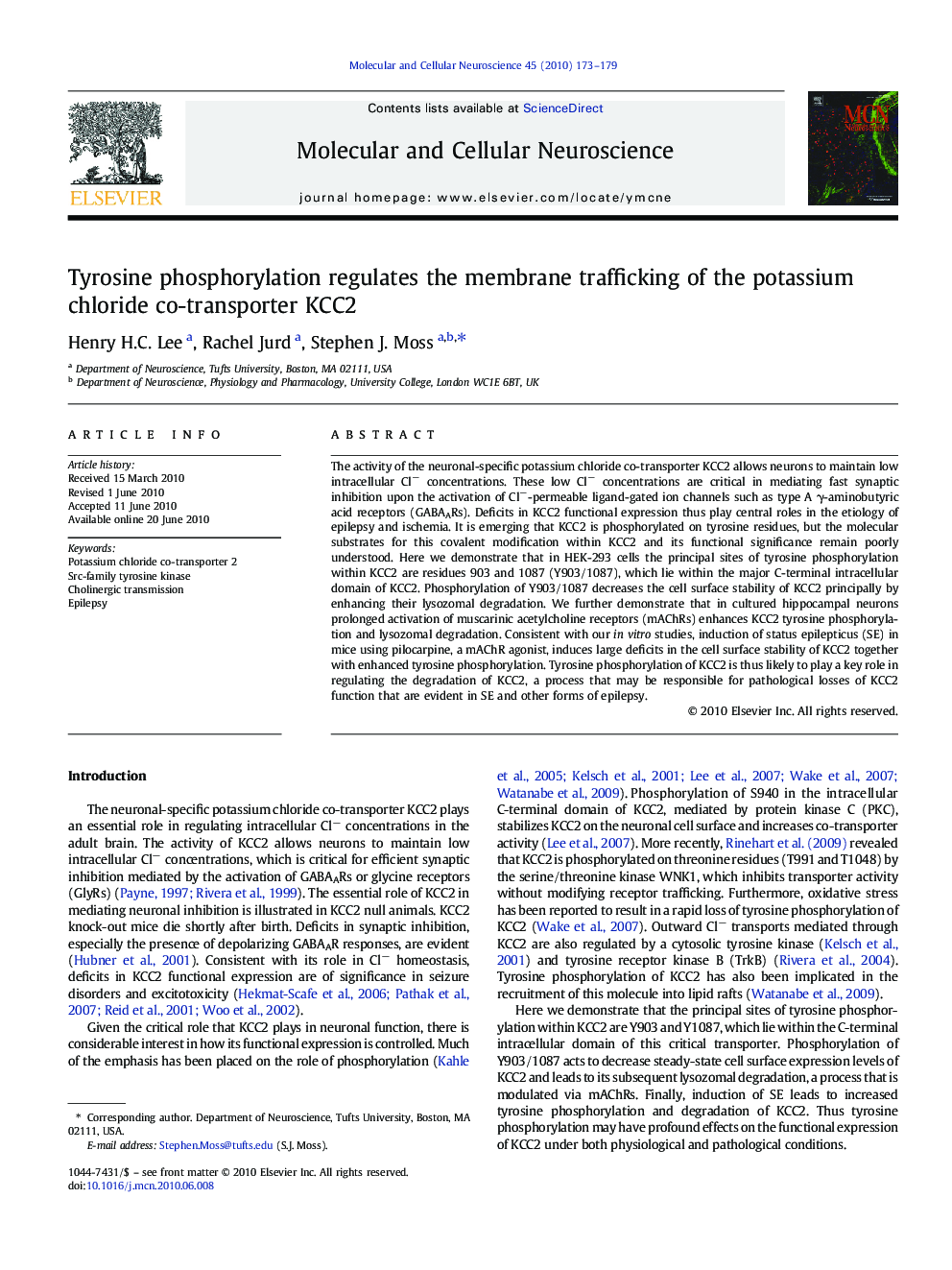| Article ID | Journal | Published Year | Pages | File Type |
|---|---|---|---|---|
| 2198763 | Molecular and Cellular Neuroscience | 2010 | 7 Pages |
The activity of the neuronal-specific potassium chloride co-transporter KCC2 allows neurons to maintain low intracellular Cl− concentrations. These low Cl− concentrations are critical in mediating fast synaptic inhibition upon the activation of Cl−-permeable ligand-gated ion channels such as type A γ-aminobutyric acid receptors (GABAARs). Deficits in KCC2 functional expression thus play central roles in the etiology of epilepsy and ischemia. It is emerging that KCC2 is phosphorylated on tyrosine residues, but the molecular substrates for this covalent modification within KCC2 and its functional significance remain poorly understood. Here we demonstrate that in HEK-293 cells the principal sites of tyrosine phosphorylation within KCC2 are residues 903 and 1087 (Y903/1087), which lie within the major C-terminal intracellular domain of KCC2. Phosphorylation of Y903/1087 decreases the cell surface stability of KCC2 principally by enhancing their lysozomal degradation. We further demonstrate that in cultured hippocampal neurons prolonged activation of muscarinic acetylcholine receptors (mAChRs) enhances KCC2 tyrosine phosphorylation and lysozomal degradation. Consistent with our in vitro studies, induction of status epilepticus (SE) in mice using pilocarpine, a mAChR agonist, induces large deficits in the cell surface stability of KCC2 together with enhanced tyrosine phosphorylation. Tyrosine phosphorylation of KCC2 is thus likely to play a key role in regulating the degradation of KCC2, a process that may be responsible for pathological losses of KCC2 function that are evident in SE and other forms of epilepsy.
